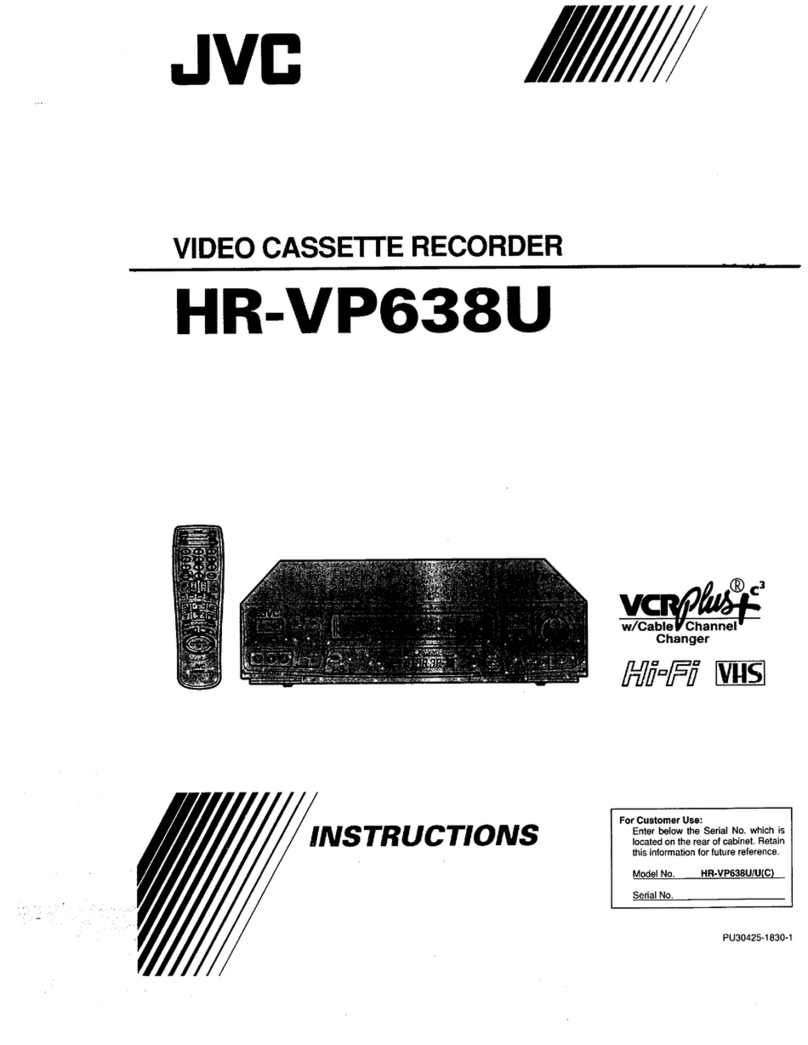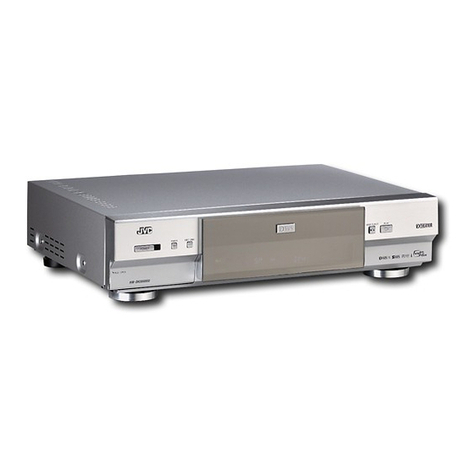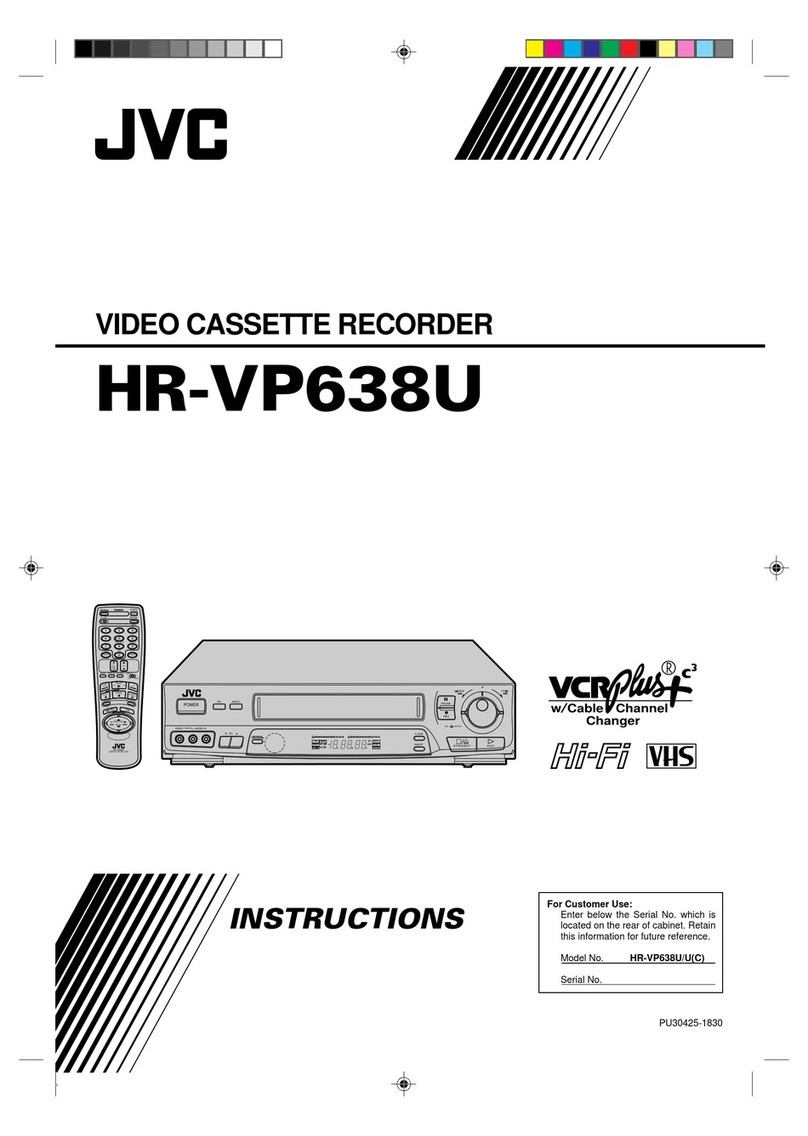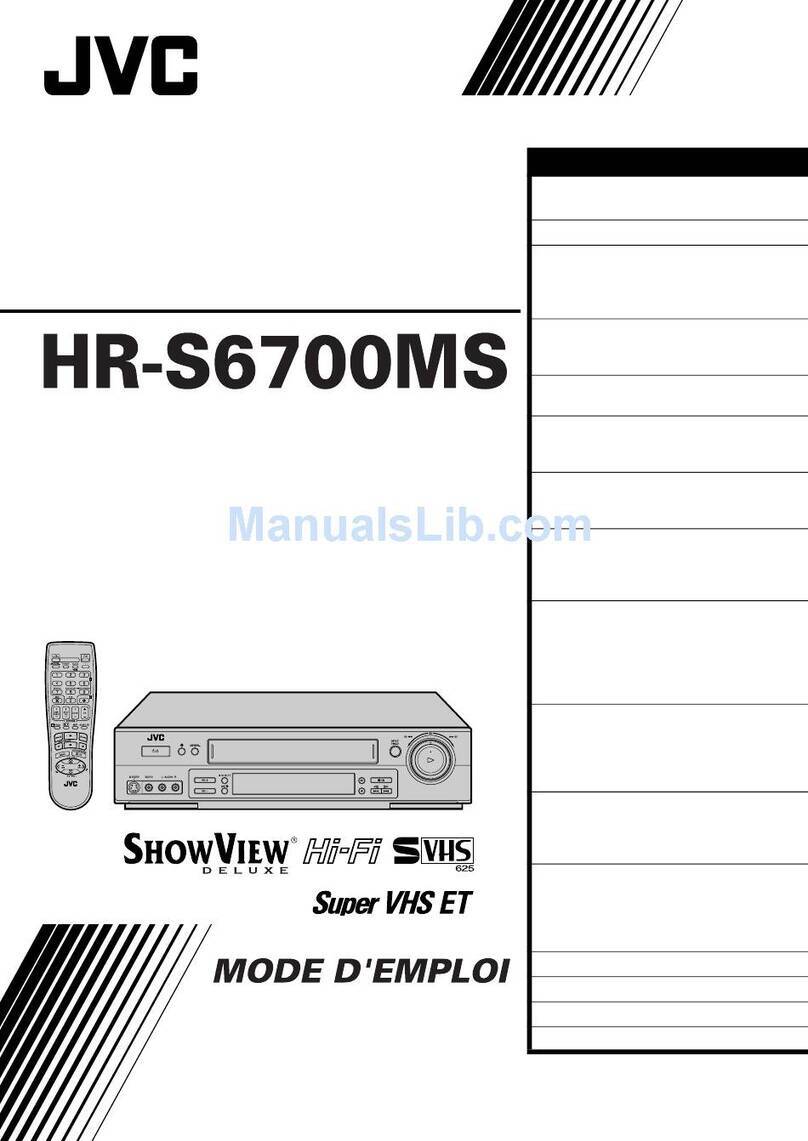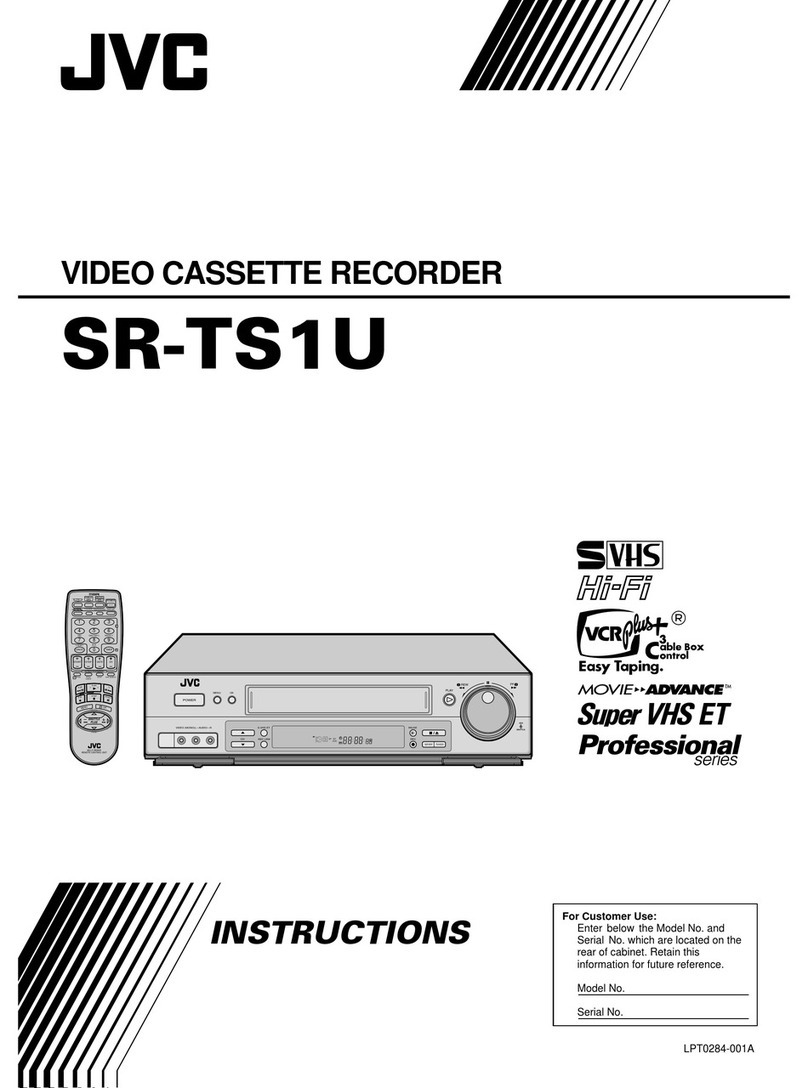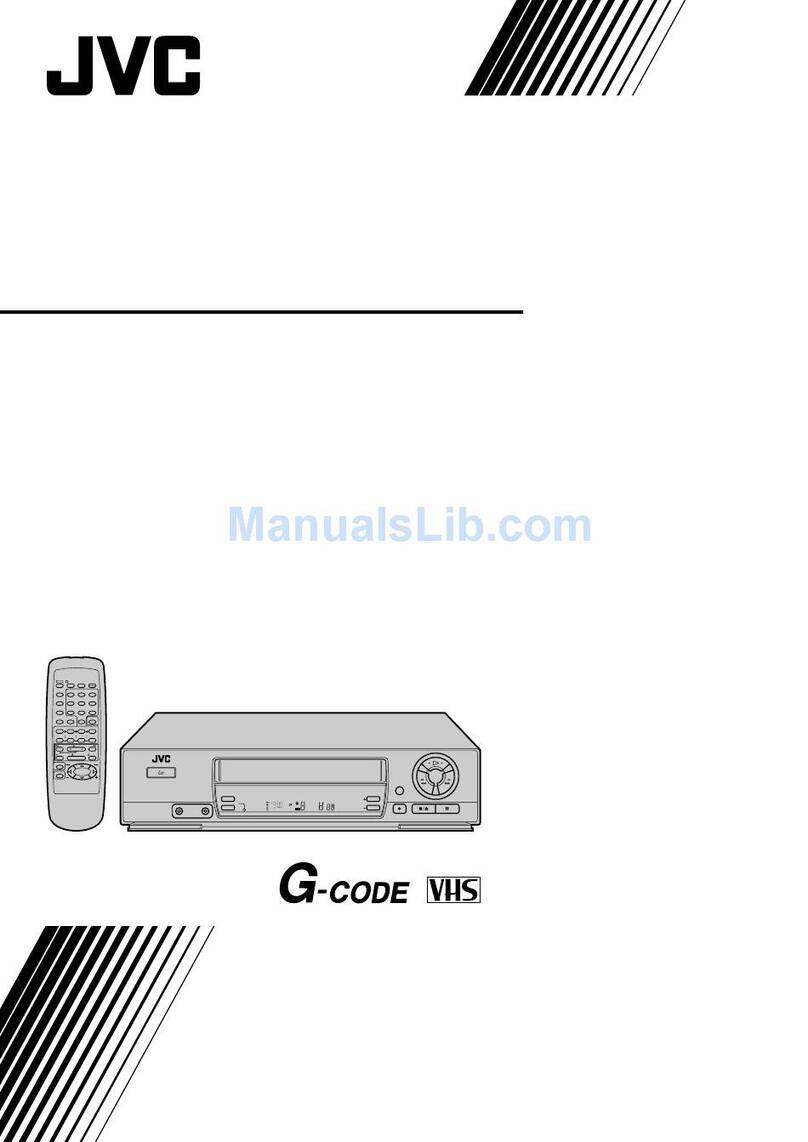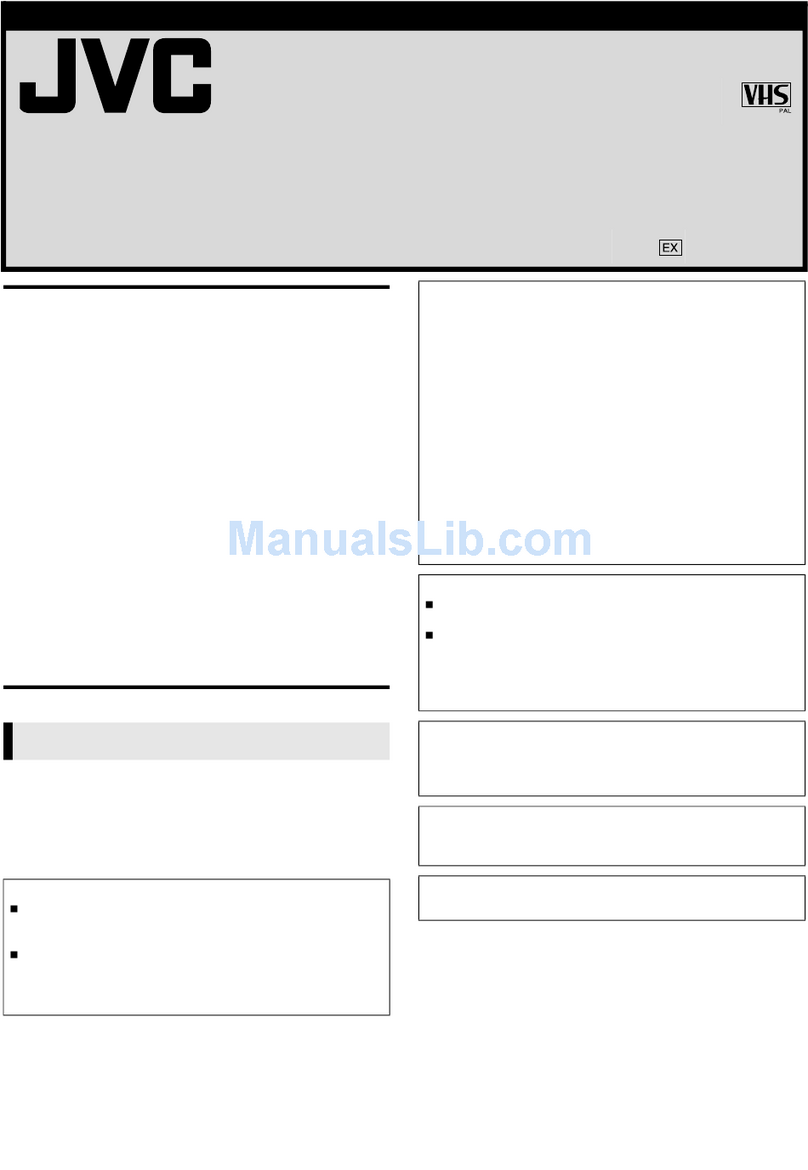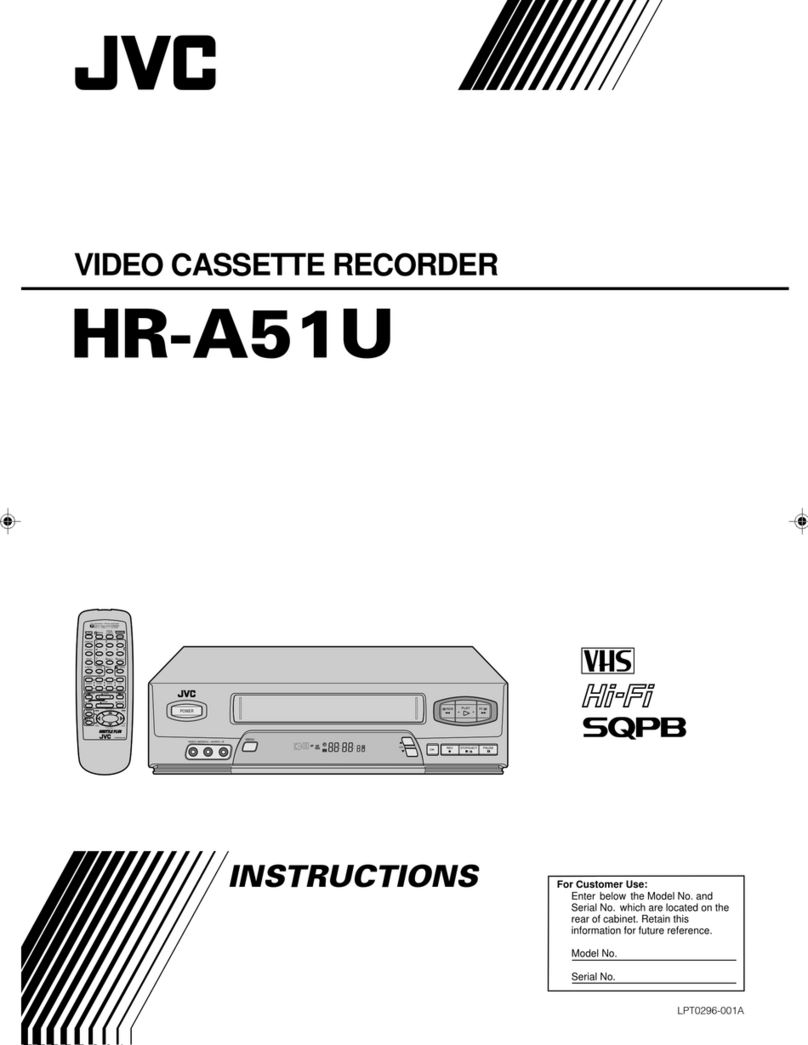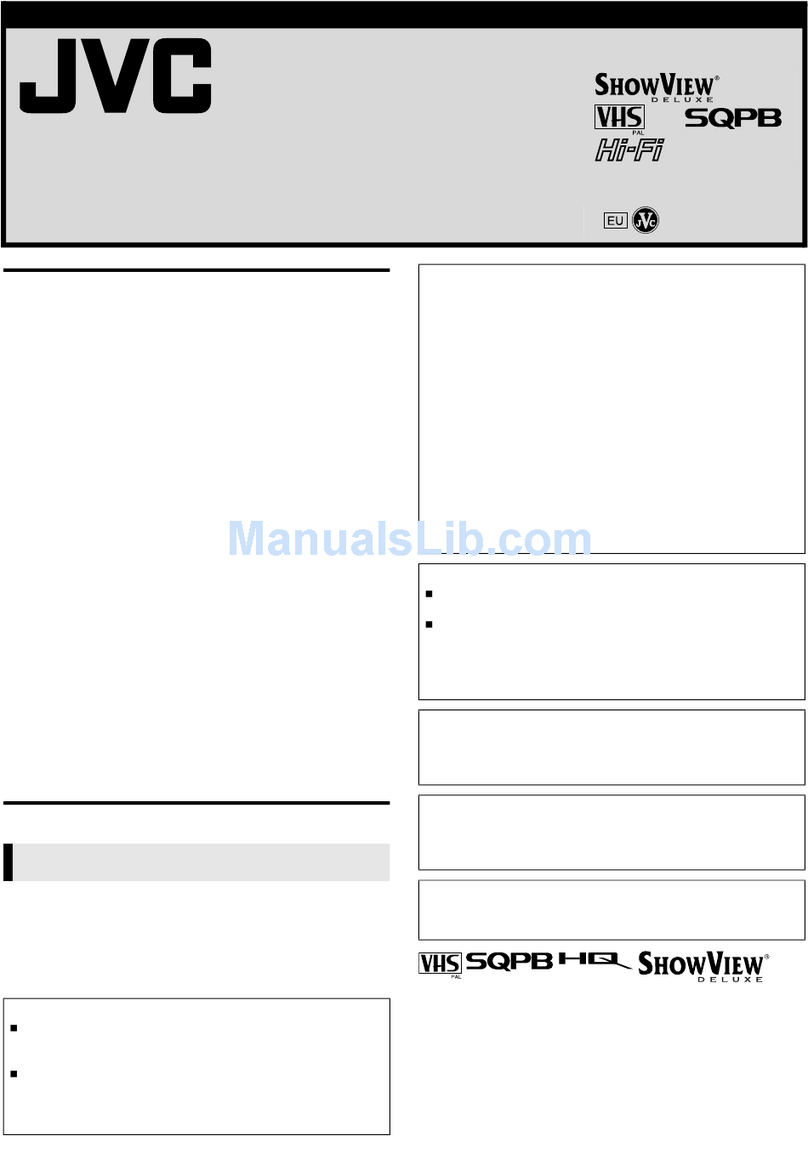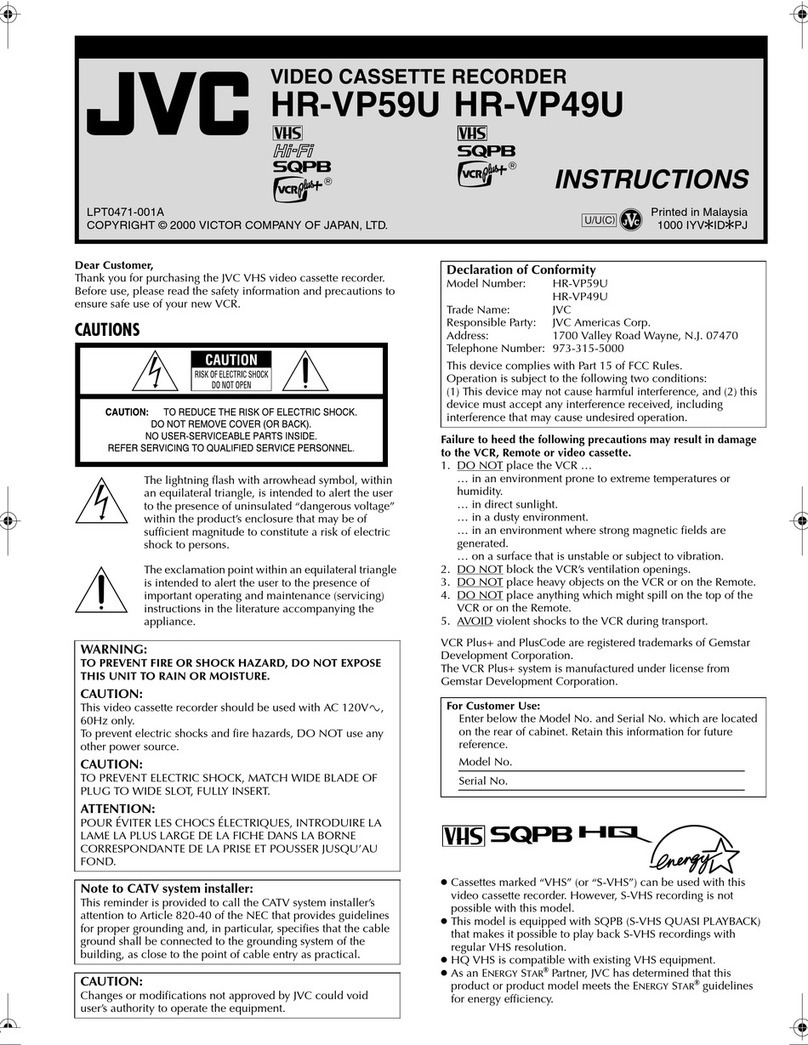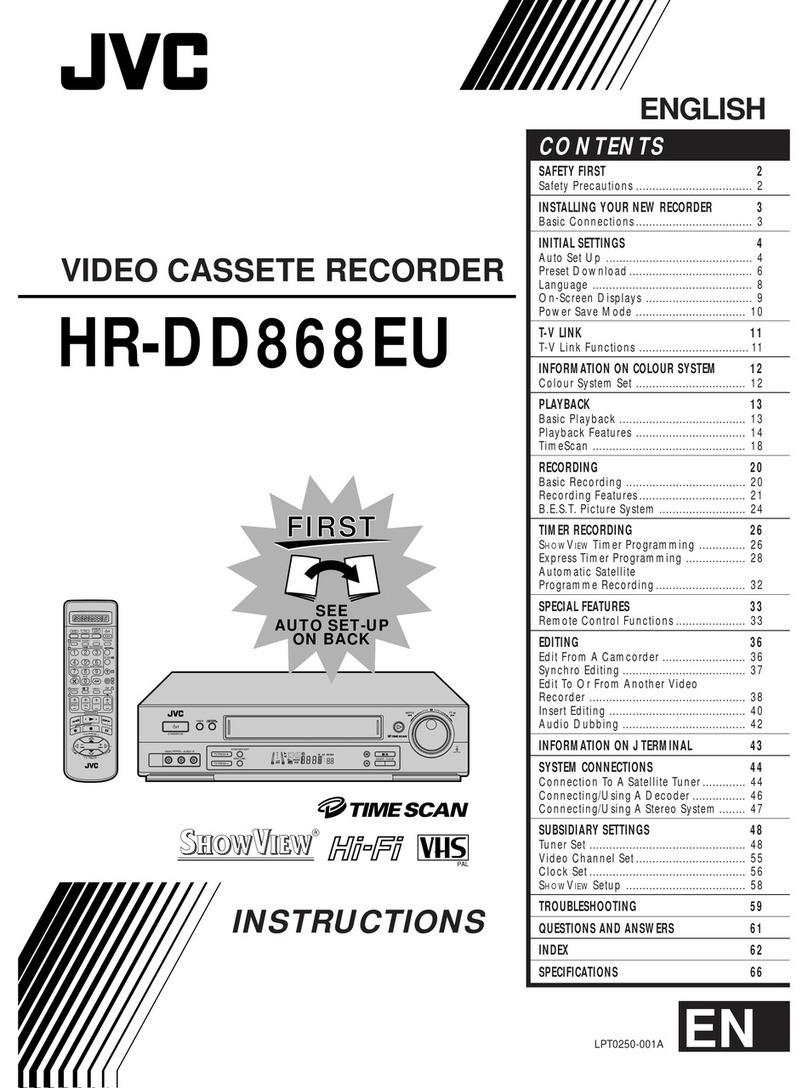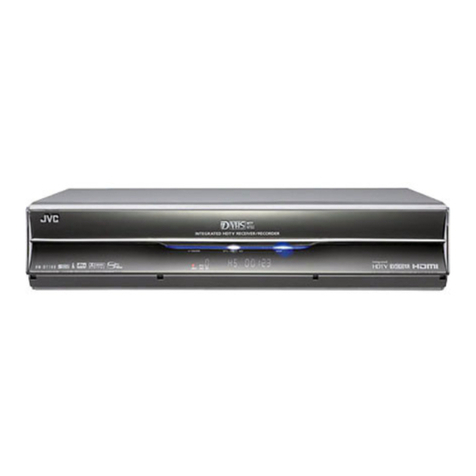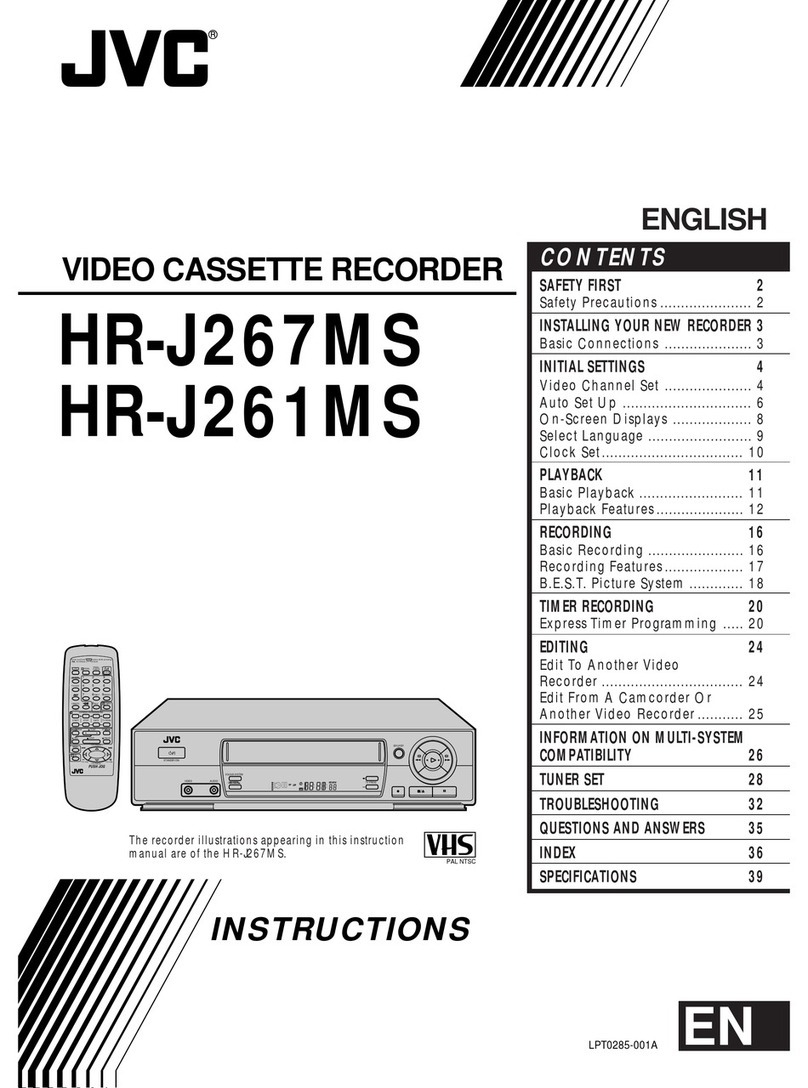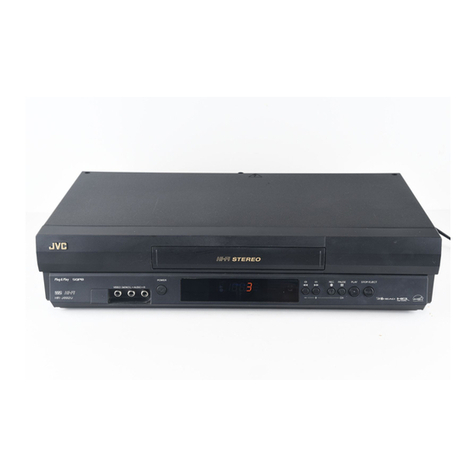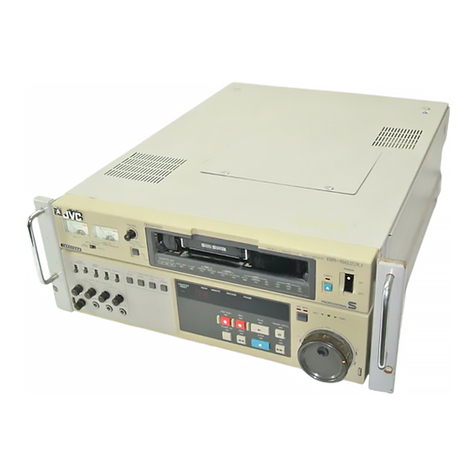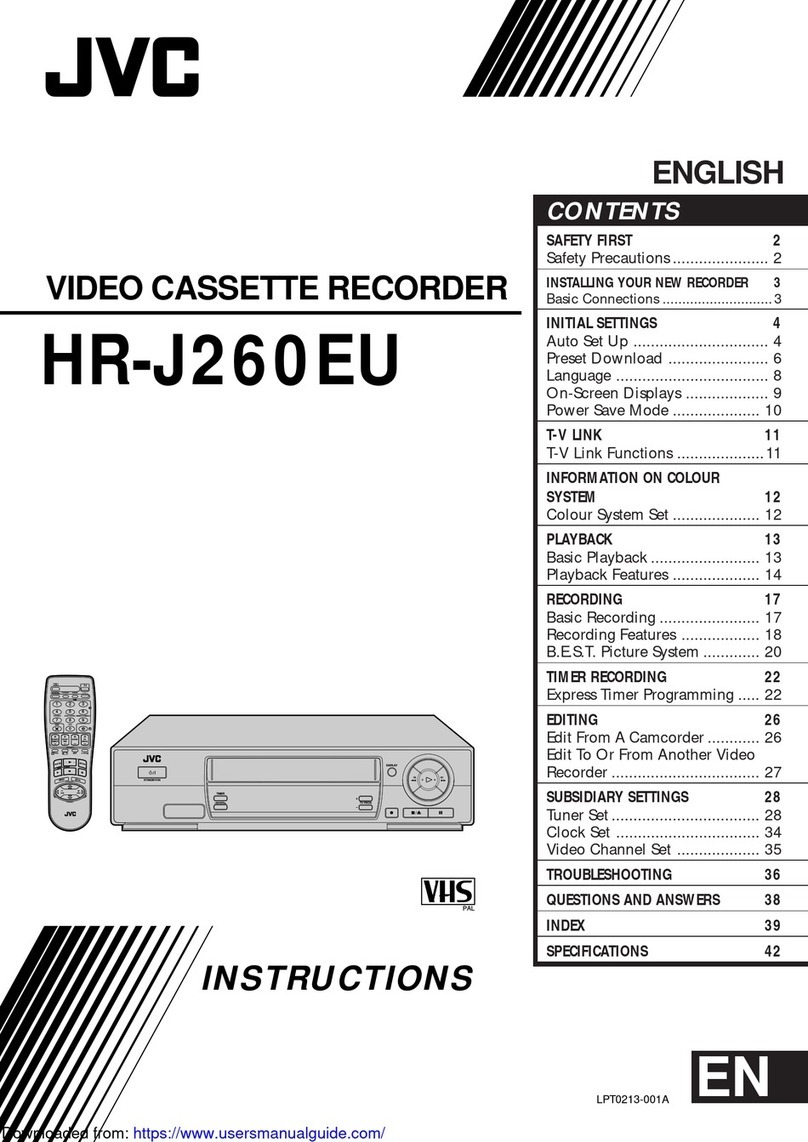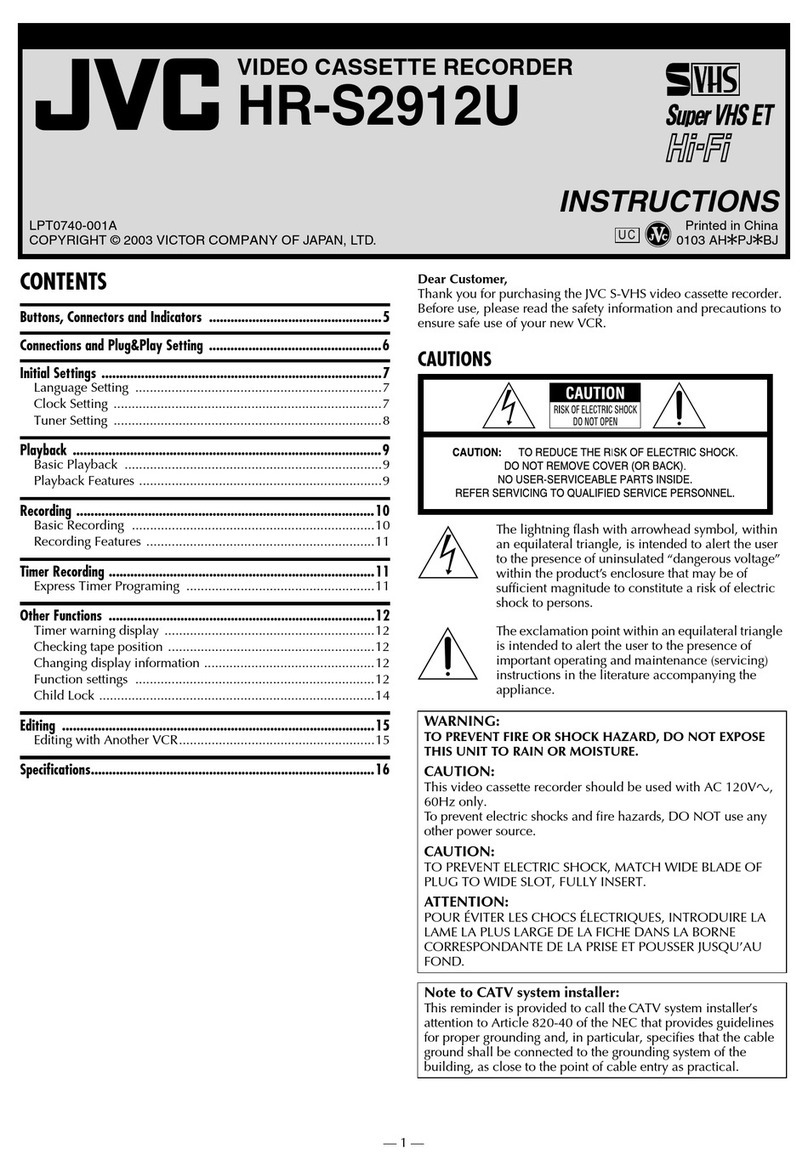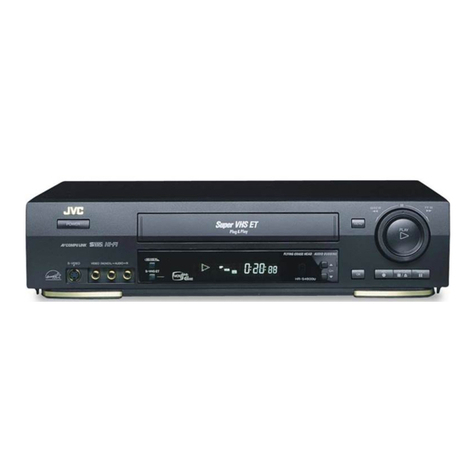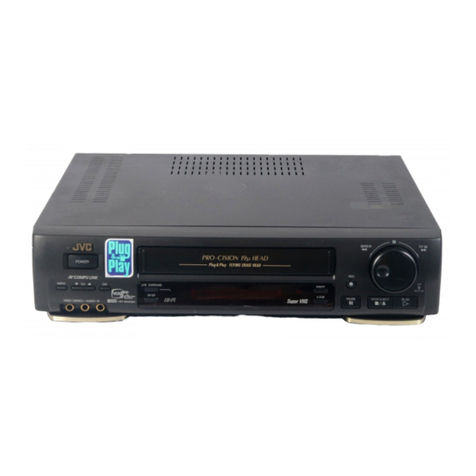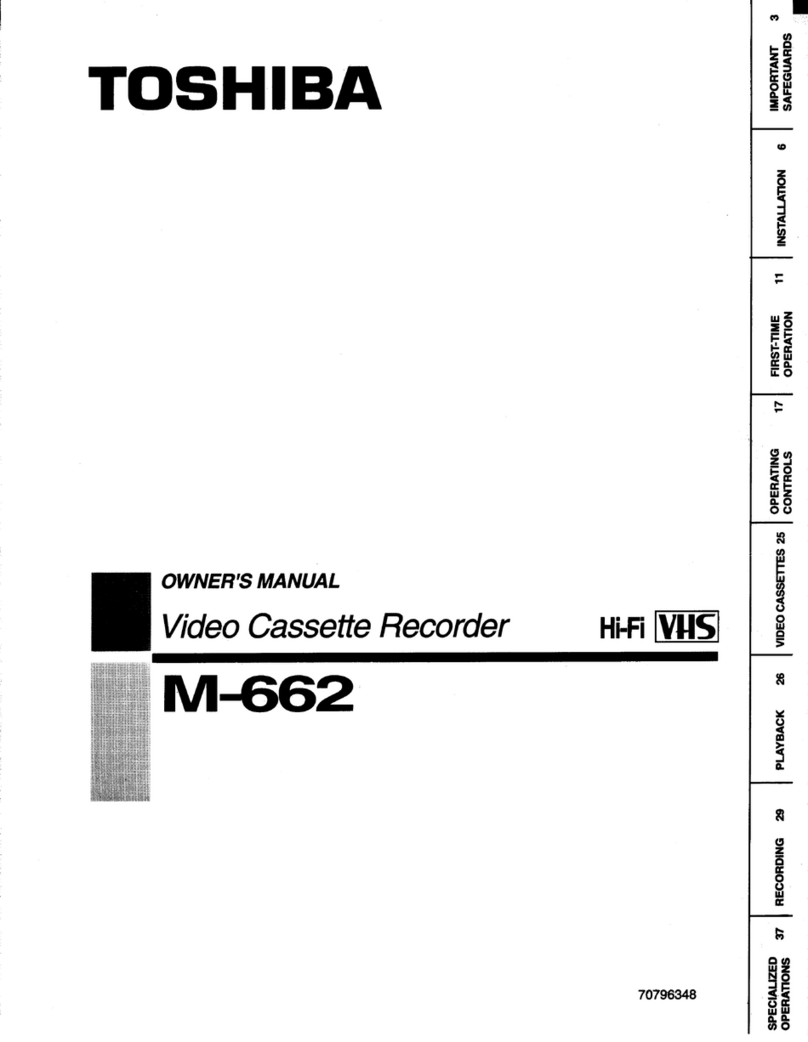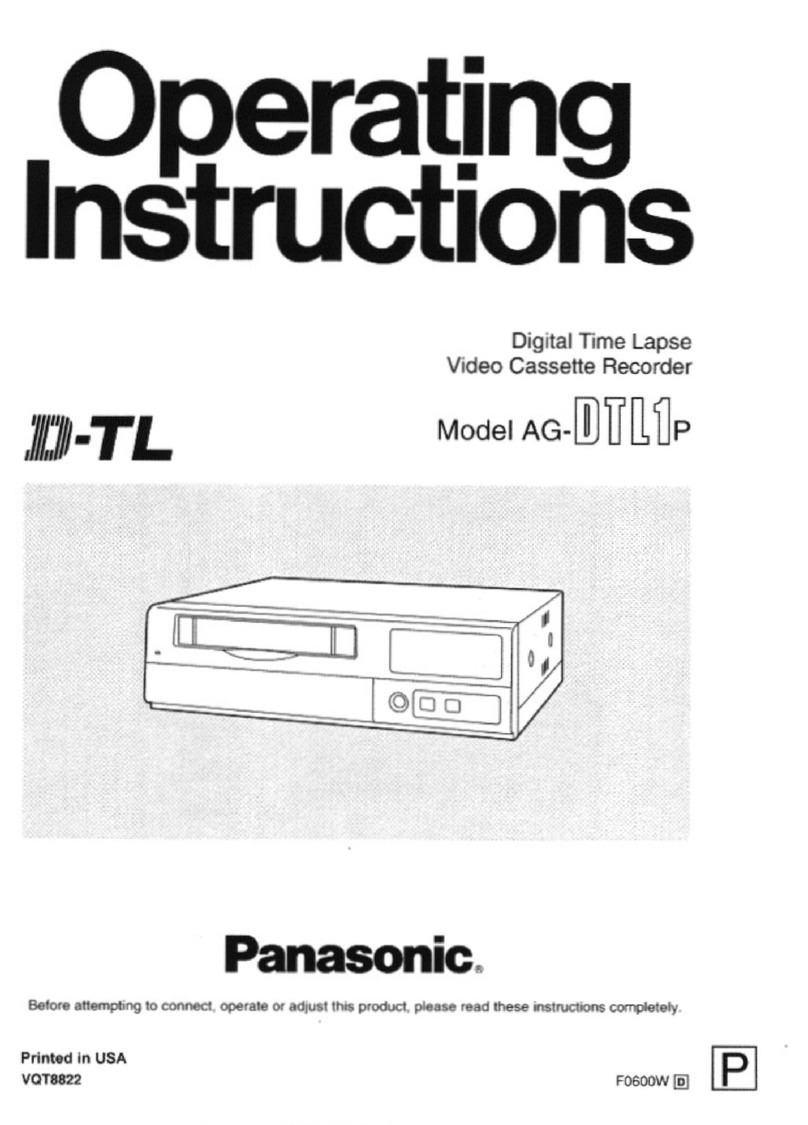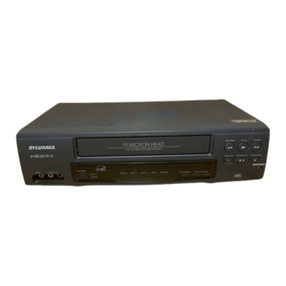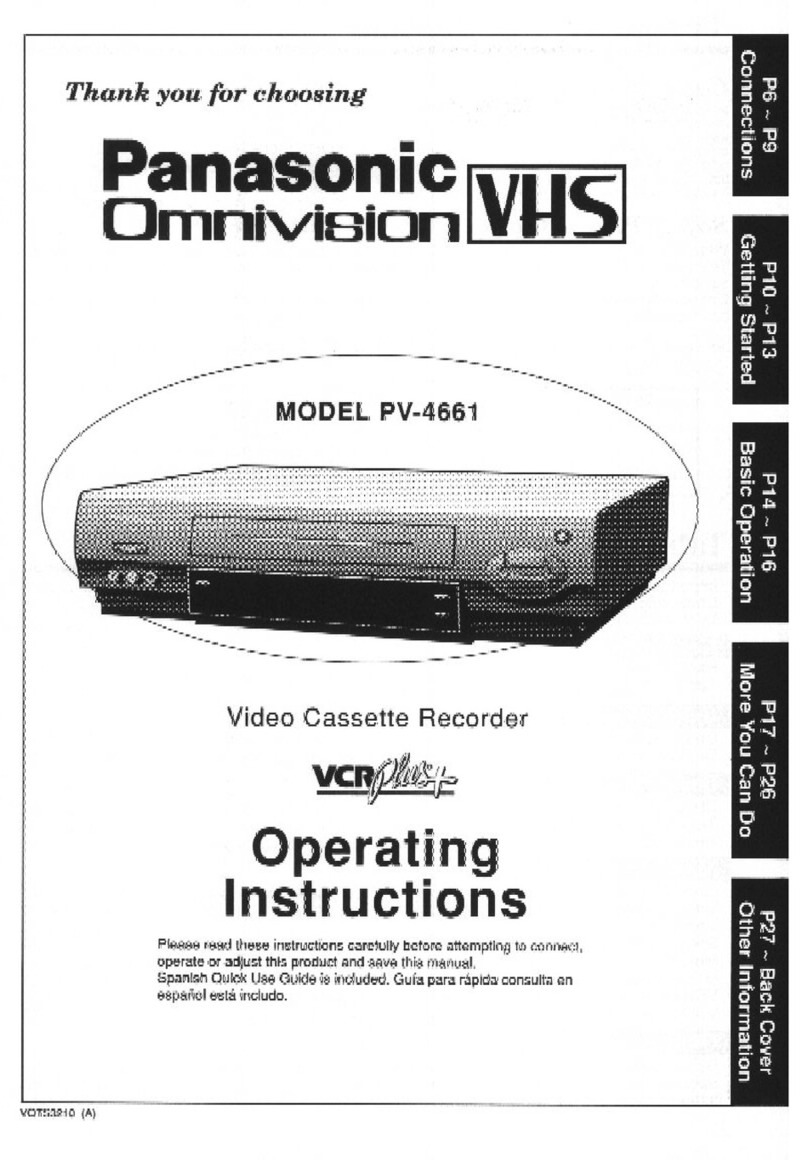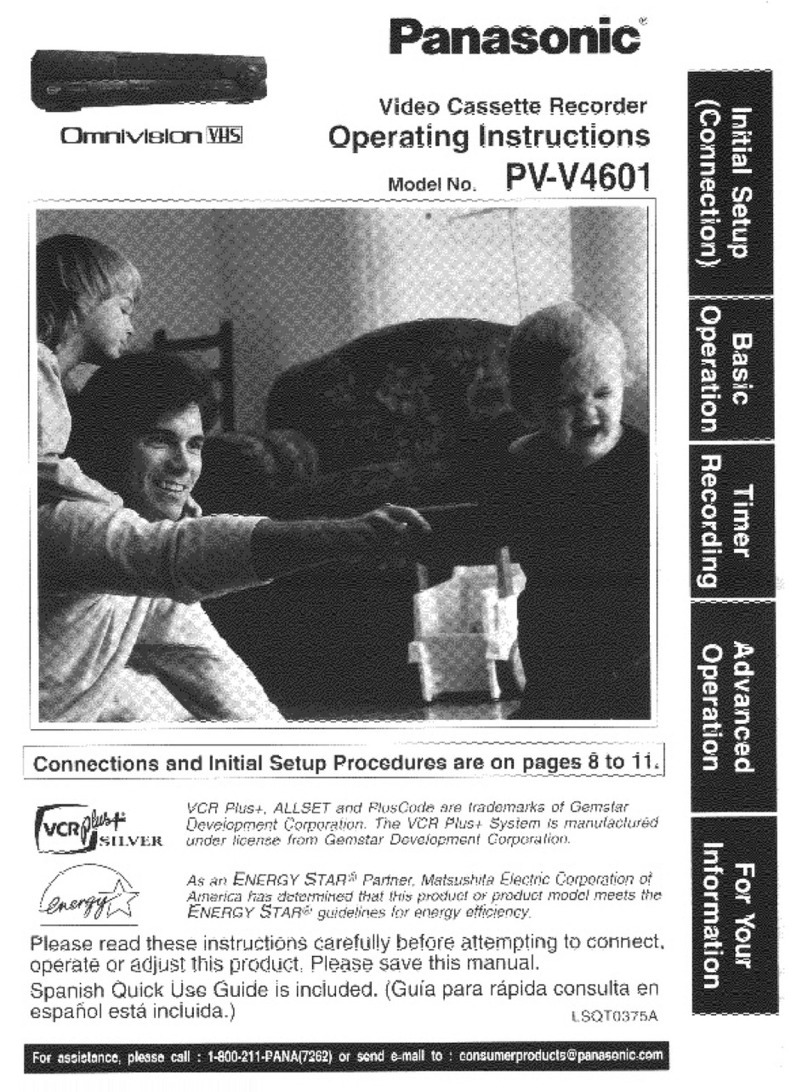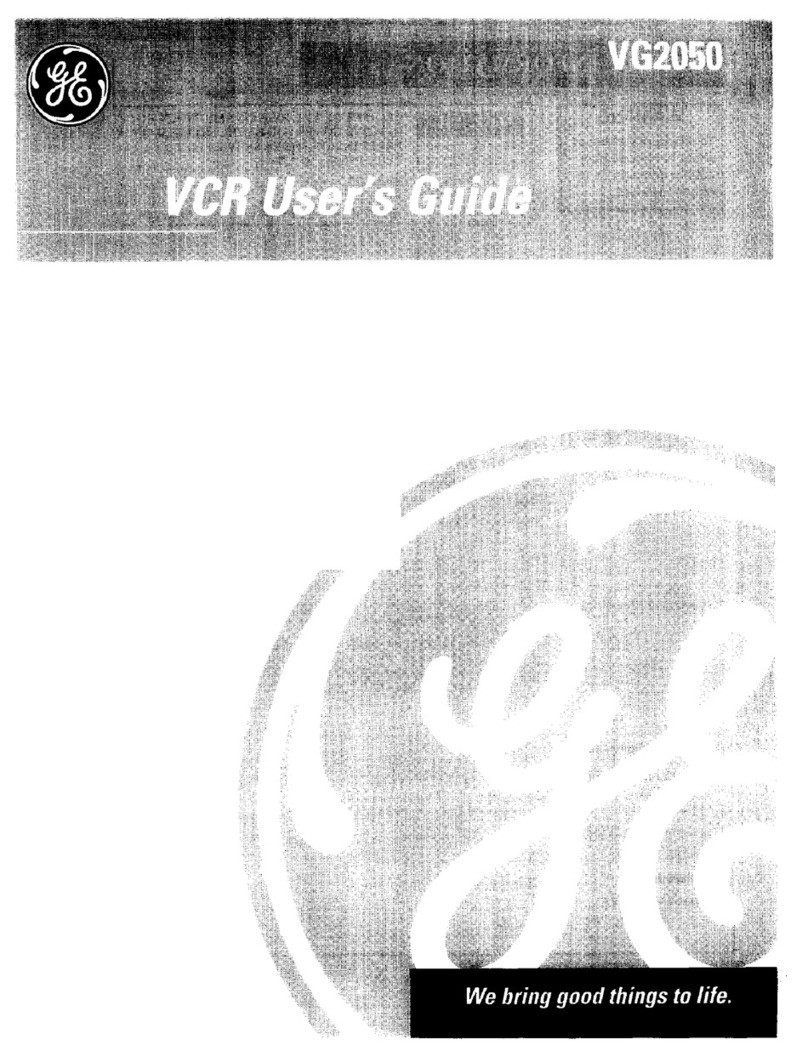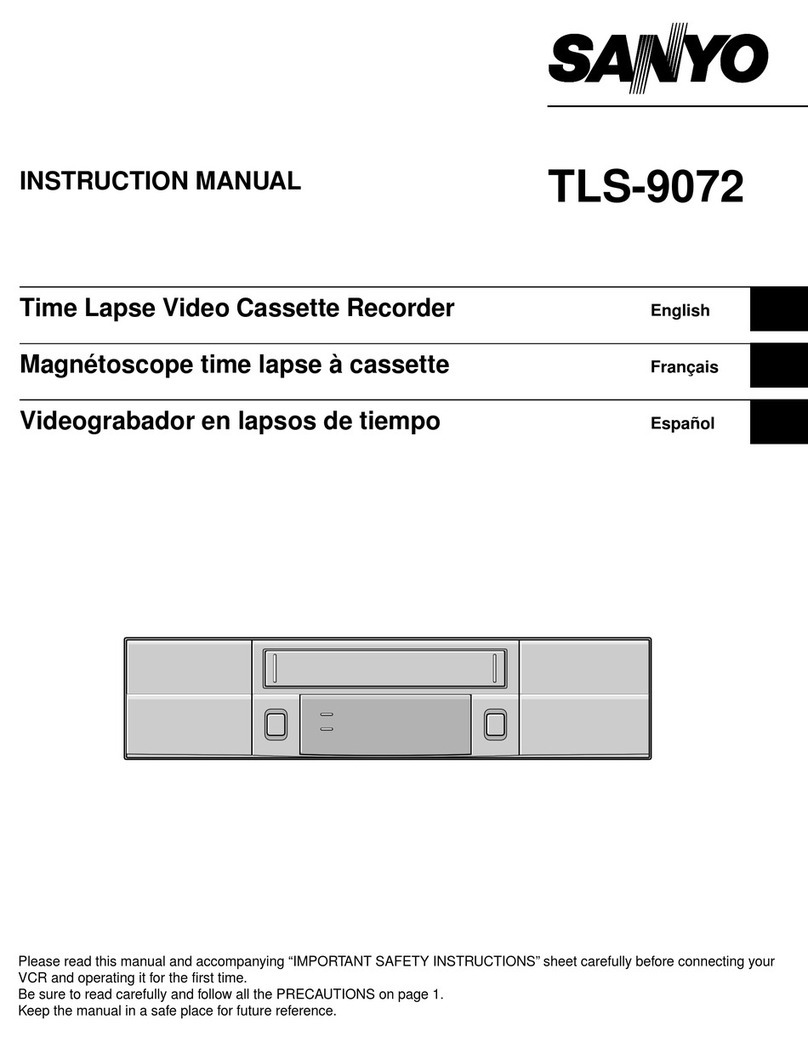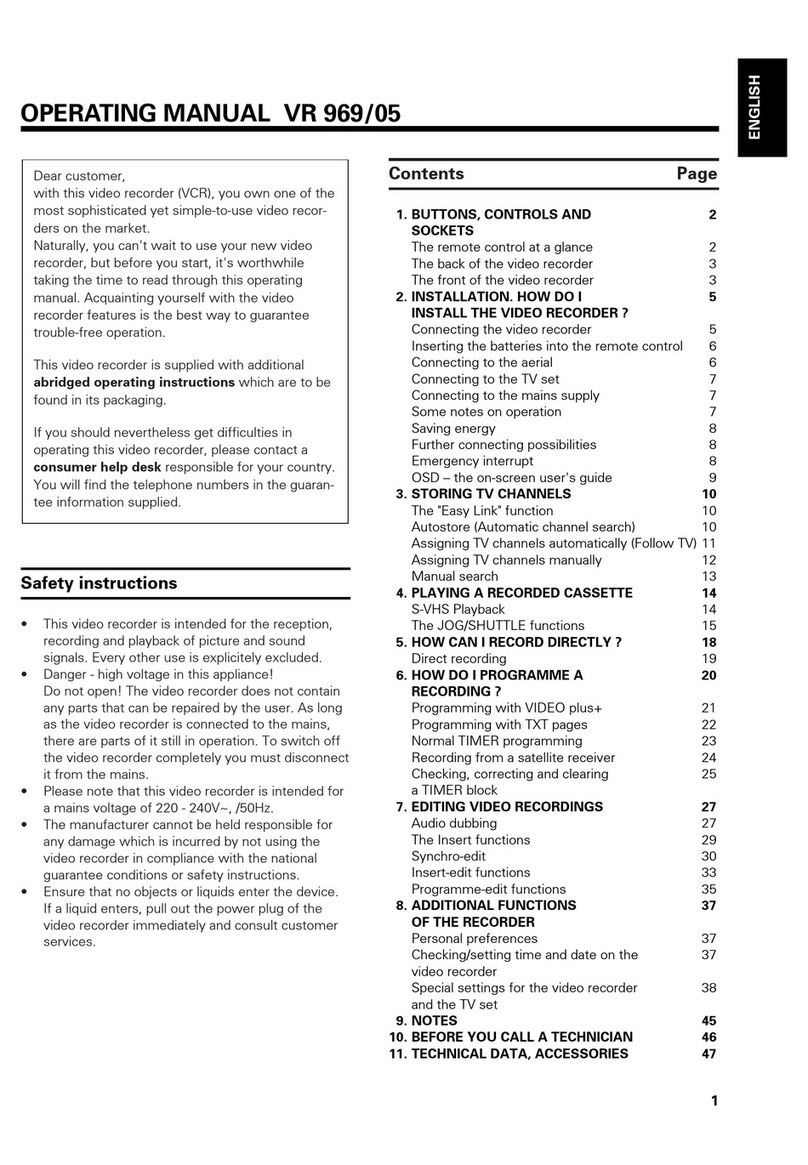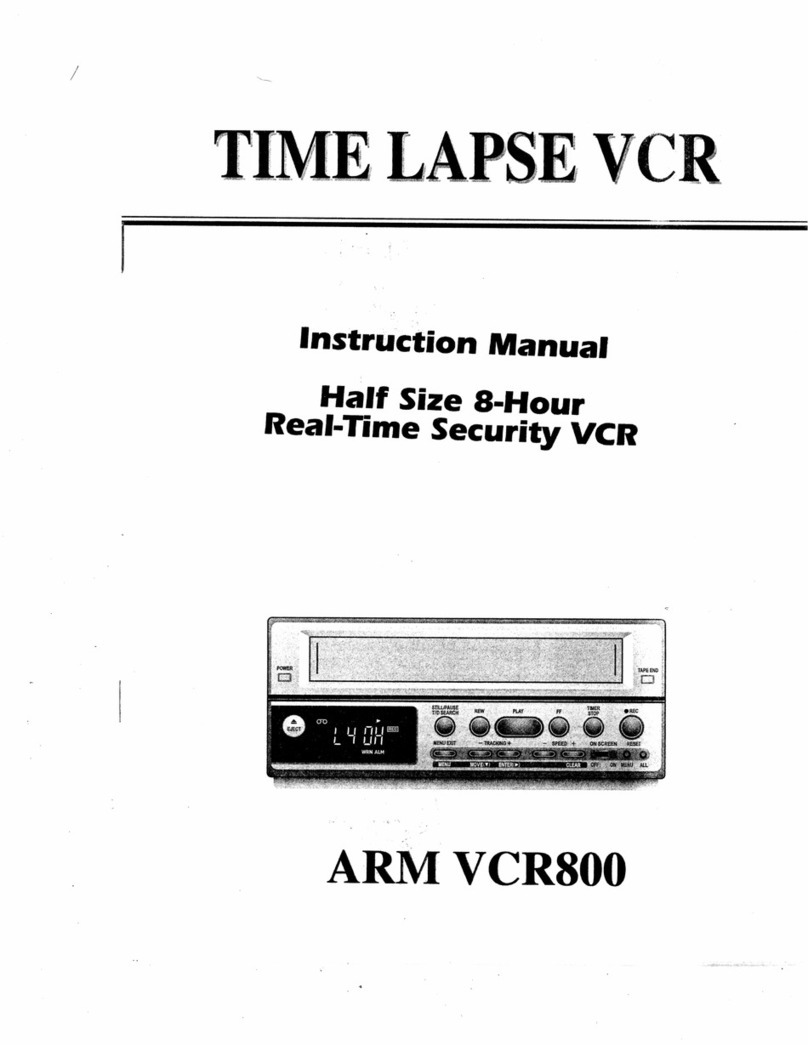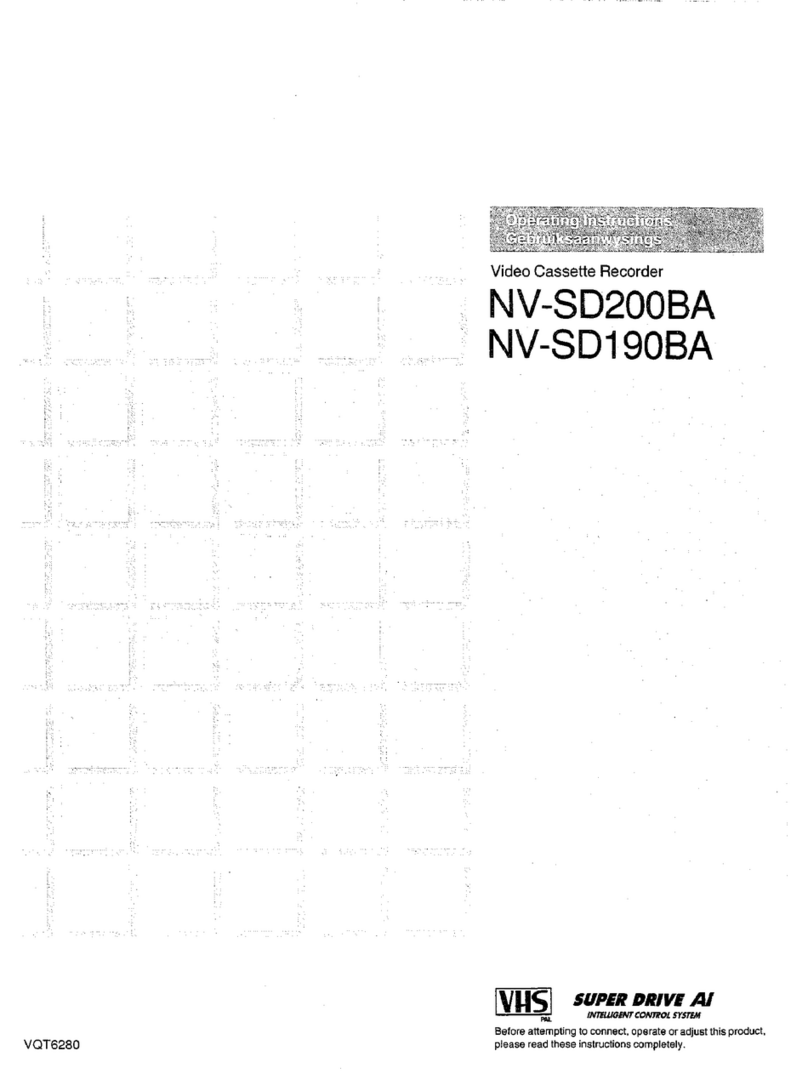
Important Safety Precautions
INSTRUCTIONS
1. DISASSEMBLY
1.1 DISASSEMBLY FLOW CHART ............................................................ 1-1
1.2 HOW TO READ THE DISASSEMBLY AND ASSEMBLY ...................... 1-1
1.3 DISASSEMBLY/ASSEMBLY METHOD ................................................ 1-1
1.4 SERVICE POSITION ............................................................................ 1-4
1.4.1 How to take out the Mechanism and Main board assemblies ......... 1-4
1.4.2 Precautions for cassette loading in the "SERVICE POSITION" ...... 1-5
1.4.3 Cassette loading and ejection methods in the
“SERVICE POSITION”(See Fig. 1-4-3). .......................................... 1-5
1.5 MECHANISM SERVICE MODE ........................................................... 1-5
1.5.1 How to set the "MECHANISM SERVICE MODE" ............................ 1-5
1.6 EMERGENCY DISPLAY FUNCTION ................................................... 1-6
1.6.1 Displaying the emergency information ............................................ 1-6
1.6.2 Clearing the emergency history ....................................................... 1-6
1.6.3 Emergency content description ....................................................... 1-7
1.6.4 Emergency detail information 1 ....................................................... 1-8
1.6.5 Emergency detail information 2 ....................................................... 1-9
1.7 SYSCON CIRCUIT ............................................................................. 1-10
1.7.1 Syscon CPU pin function (IC3001) 1/2 .......................................... 1-10
1.7.2 Syscon CPU pin function (IC3001) 2/2 .......................................... 1-11
2. MECHANISM ADJUSTMENT
2.1 BEFORE STARTING REPAIR AND ADJUSTMENT ............................. 2-1
2.1.1 Precautions ...................................................................................... 2-1
2.1.2 Checking for Proper Mechanical Operations ................................... 2-1
2.1.3 Manually Removing the Cassette Tape ........................................... 2-1
2.1.4 Jigs and Tools Required for Adjustment .......................................... 2-2
2.1.5 Maintenance and Inspection ............................................................ 2-3
2.2 REPLACEMENT OF MAJOR PARTS .................................................. 2-6
2.2.1
Before Starting Disassembling (Phase matching between mechanical parts)
2-6
2.2.2 How to Set the Mechanism Assembling Mode ................................ 2-6
2.2.3 Cassette Holder Assembly .............................................................. 2-6
2.2.4 Pinch Roller Arm Assembly ............................................................. 2-8
2.2.5 Guide Arm Assembly and Press Lever Assembly ............................ 2-8
2.2.6 Audio Control Head ......................................................................... 2-8
2.2.7 Loading Motor .................................................................................. 2-8
2.2.8 Capstan Motor ................................................................................. 2-9
2.2.9 Pole Base Assembly (supply or take-up side) ................................. 2-9
2.2.10 Rotary Encoder ........................................................................... 2-10
2.2.11 Clutch Unit .................................................................................. 2-10
2.2.12
Change Lever Assembly, Direct Gear, Clutch Gear and Coupling Gear
2-10
2.2.13 Link Lever ................................................................................... 2-11
2.2.14 Cassette Gear, Control Cam and Worm Gear ............................ 2-11
2.2.15 Control Plate ............................................................................... 2-11
2.2.16
Loading Arm Gear (supply or take-up side) and Loading Arm Gear Shaft
2-12
2.2.17 Take-up Lever, Take-up Head and Control Plate Guide ............. 2-13
2.2.18 Capstan Brake Assembly ........................................................... 2-13
2.2.19 Sub Brake Assembly (take-up side) ........................................... 2-13
2.2.20 Main Brake Assembly (take-up side), Reel Disk (take-up side)
and Main Brake Assembly (supply side) ..................................... 2-13
2.2.21
Tension Brake Assembly, Reel Disk (supply side) and Tension Arm Assembly
2-14
2.2.22 Idler Lever, Idler Arm Assembly .................................................. 2-14
2.2.23 Stator Assembly .......................................................................... 2-14
2.2.24 Rotor Assembly .......................................................................... 2-14
2.2.25 Upper Drum Assembly ................................................................ 2-15
2.3 COMPATIBILITY ADJUSTMENT ........................................................ 2-16
2.3.1 Checking/Adjustment of FM Waveform Linearity ........................... 2-16
2.3.2
Checking/Adjustment of the Height and Tilt of the Audio Control Head
2-17
2.3.3 Checking/Adjustment of the Audio Control Head Phase (X-Value) 2-17
2.3.4 Checking/Adjustment of the Standard Tracking Preset ................. 2-18
2.3.5 Checking/Adjustment of the Tension Pole Position ....................... 2-18
3. ELECTRICAL ADJUSTMENT
3.1 PRECAUTION ...................................................................................... 3-1
3.1.1 Required test equipments ................................................................ 3-1
3.1.2 Required adjustment tools ............................................................... 3-1
3.1.3 Color (colour) bar signal,Color (colour) bar pattern ......................... 3-1
3.1.4 Switch settings and standard precautions ....................................... 3-1
3.1.5 EVR Adjustment .............................................................................. 3-1
3.2 SERVO CIRCUIT .................................................................................. 3-2
3.2.1 Switching point ................................................................................ 3-2
3.2.2 Slow tracking preset ........................................................................ 3-2
3.3 VIDEO CIRCUIT ................................................................................... 3-2
3.3.1 D/A level .......................................................................................... 3-2
TABLE OF CONTENTS
Section Title Page Section Title Page
3.3.2 EE Y level ........................................................................................ 3-3
3.3.3 PB Y level (S-VHS / VHS) ............................................................... 3-3
3.3.4 REC color (colour) level ................................................................... 3-3
3.3.5 Video EQ (Frequency response) ..................................................... 3-4
3.3.6 AUTO PICTURE initial setting ......................................................... 3-4
3.4 AUDIO CIRCUIT ................................................................................... 3-5
3.4.1 Audio REC FM ................................................................................. 3-5
3.5 PAL/SECAM CONVERTER CIRCUIT .................................................. 3-5
3.5.1 fH VCO ............................................................................................ 3-5
3.5.2 DEMOD Fo ...................................................................................... 3-5
3.5.3 Colour difference level ..................................................................... 3-6
3.5.4 PAL burst position ............................................................................ 3-6
4. CHARTS AND DIAGRAMS
NOTES OF SCHEMATIC DIAGRAM .......................................................... 4-1
CIRCUIT BOARD NOTES ........................................................................... 4-2
4.1 BOARD INTERCONNECTIONS .......................................................... 4-3
4.2
VIDEO/AUDIO AND AUDIO ERASE SCHEMATIC DIAGRAMS .....................
4-5
4.3 SYSTEM CONTROL SCHEMATIC DIAGRAM .................................... 4-7
4.4 SWITCHING REGULATOR SCHEMATIC DIAGRAM ......................... 4-9
4.5 TUNER SCHEMATIC DIAGRAM ....................................................... 4-11
4.6 CONNECTION SCHEMATIC DIAGRAM ........................................... 4-13
4.7 2D DIGITAL SCHEMATIC DIAGRAM [HR-S6700MS] ....................... 4-15
4.8 3D DIGITAL/2M SCHEMATIC DIAGRAM [HR-S7700MS] ................. 4-17
4.9 TERMINAL SCHEMATIC DIAGRAM ................................................. 4-19
4.10 DEMODULATOR SCHEMATIC DIAGRAM ..................................... 4-21
4.11 S-SUB SCHEMATIC DIAGRAM ...................................................... 4-23
4.12 SW/DISPLAY, REC SAFETY, JACK AND SHUTTLE/PLAY
SCHEMATIC DIAGRAMS [HR-S6700MS] ....................................... 4-25
4.13 SW/DISPLAY, REC SAFETY, JACK AND JOG SCHEMATIC
DIAGRAMS [HR-S7700MS] ............................................................. 4-27
4.14 P/S CONVERTER SCHEMATIC DIAGRAM .................................... 4-29
4.15 SECAM SCHEMATIC DIAGRAM ..................................................... 4-31
4.16 MAIN, AUDIO ERASE, A/C HEAD AND LOADING MOTOR
CIRCUIT BOARDS ........................................................................... 4-35
4.17 2D DIGITAL CIRCUIT BOARD [HR-S6700MS] ............................... 4-37
4.18 3D DIGITAL/2M CIRCUIT BOARD [HR-S7700MS] ......................... 4-37
4.19 TERMINAL CIRCUIT BOARD .......................................................... 4-38
4.20 DEMODULATOR CIRCUIT BOARD ................................................ 4-39
4.21 S-SUB CIRCUIT BOARD ................................................................. 4-39
4.22 SW/DISPLAY, REC SAFETY, JACK AND SHUTTLE/PLAY
CIRCUIT BOARDS [HR-S6700MS] ................................................. 4-41
4.23
SW/DISPLAY, REC SAFETY, JACK AND JOG CIRCUIT BOARDS [HR-S7700MS]
4-43
4.24 P/S CONVERTER CIRCUIT BOARD .............................................. 4-45
4.25 SECAM CIRCUIT BOARD ............................................................... 4-47
4.26 REMOTE CONTROL SCHEMATIC DIAGRAM ............................... 4-48
4.27
FDP GRID ASSIGNMENT AND ANODE CONNECTION[HR-S6700MS] .
4-49
4.28
FDP GRID ASSIGNMENT AND ANODE CONNECTION[HR-S7700MS] .
4-50
4.29 VOLTAGE CHARTS ......................................................................... 4-51
4.30 SYSTEM CONTROL BLOCK DIAGRAM ......................................... 4-57
4.31 VIDEO BLOCK DIAGRAM ............................................................... 4-59
4.32 AUDIO BLOCK DIAGRAM ............................................................... 4-63
5. PARTS LIST
5.1 PACKING AND ACCESSORY ASSEMBLY <M1> ............................... 5-1
5.2 CABINET AND CHASSIS ASSEMBLY <M2> ...................................... 5-2
5.3 MECHANISM ASSEMBLY <M4> ......................................................... 5-4
5.4 ELECTRICAL PARTS LIST .................................................................. 5-6
MAIN BOARD ASSEMBLY <03> .............................................................. 5-6
2D DIGITAL BOARD ASSEMBLY(S6700MS)<05> ................................. 5-12
3D DIGITAL/2M BOARD ASSEMBLY(S7700MS) <05> .......................... 5-13
TERMINAL BOARD ASSEMBLY <06> ................................................... 5-14
AUDIO CONTROL HEAD BOARD ASSEMBLY <12> ............................ 5-16
DEMOD BOARD ASSEMBLY <14> ........................................................ 5-16
S-SUB BOARD ASSEMBLY <15> .......................................................... 5-17
DISPLAY BOARD ASSEMBLY(S6700MS) <28> .................................... 5-17
DISPLAY BOARD ASSEMBLY(S7700MS) <28> .................................... 5-18
REC SAFETY BOARD ASSEMBLY(S6700MS) <32> ............................ 5-19
REC SAFETY BOARD ASSEMBLY(S7700MS) <32> ............................ 5-19
S JACK BOARD ASSEMBLY(S7700MS) <36> ...................................... 5-19
S JACK BOARD ASSEMBLY(S6700MS) <36> ...................................... 5-19
JOG BOARD ASSEMBLY(S7700MS) <37> ............................................ 5-19
AUDIO ERASE BOARD ASSEMBLY <46> ............................................. 5-19
LOADING MOTOR BOARD ASSEMBLY <55> ....................................... 5-19
SHUTTLE/PLAY BOARD ASSEMBLY(S6700MS) <85> ......................... 5-19
P/S CONVERTER BOARD ASSEMBLY <87> ........................................ 5-20
SECAM BOARD ASSEMBLY <88> ........................................................ 5-22
HR-S6700MS HR-S7700MS
JOG/SHUTTLE DIAL SHUTTLE PLAY JOG/SHUTTLE
FLYING ERASE HEAD NOT USED USED
INSERT EDIT NOT USED USED
DIGITAL 3R NOT USED USED
TBC/3D-MEMORY NOT USED USED/2M
AUDIO DUBBING NOT USED USED
HiFi LEVEL METER NOT USED USED
RE-TAKE (CM PAUSE) NOT USED USED
R.PAUSE NOT USED USED
The following table lists the differing points between Models (HR-S6700MS and HR-S7700MS) in this series.
